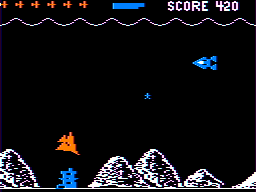One of my favorite writers and game authors from the 80's was John J. Anderson. I first got acquainted with John from his excellent game Sea Dragon (published by Scott Adam's company Adventure International) and then Eliminator.
I used to read his columns in Creative Computing magazine and he was a very bright guy, crossing over between the Apple II and Atari 800 with ease. He was one of the few authors back in the day to write code for both platforms because it required quite a bit of knowledge to do both well. Not only did you have to be completely fluent with 6502 assembler but you also had to know the entire memory map of the system and all the important switches and places in RAM and ROM. John was a master of 8-bit systems alongside Jim Nitchals and David Lubar.
John Anderson died on October 17, 1989, seventeen years ago. R.I.P. John.
AWESOME UPDATE: Evidently, the John Anderson who died in this news article was NOT the game programmer, but the journalist. The game programming John Anderson contacted me and said he's quite alive still.


